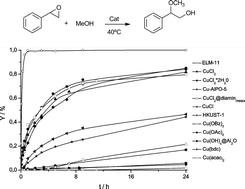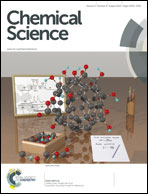MOF catalysis in relation to their homogeneous counterparts and conventional solid catalysts†
Abstract
Metal–organic frameworks have recently attracted attention as heterogeneous catalysts due to their high content of metal centres and large surface area and pore volume, along with their impressive topological richness. Therefore, many studies describing the use of MOFs as heterogeneous Lewis acid catalysts have been published. In this regard, these efforts have been directed towards probing the catalytic activity. Further information is required in terms of kinetic parameters and comparison of performance with their homogeneous counterparts, or other conventional heterogeneous catalysts. Here we have attempted to put MOFs into perspective with respect to their homogeneous counterparts and more conventional heterogeneous catalysts to show their advantages and limitations. We have exemplified a number of reactions reported in the literature wherein MOFs have been used as catalysts, and we have carried them out using homogeneous counterparts, i.e. benzoates and acetates, and other well defined conventional solid catalysts. The activities and selectivities of the catalysts are compared and then put into perspective on the basis of kinetic parameters, such as turnover numbers and turnover frequencies. Additionally, we illustrate using selected examples what the potential advantages of MOF catalysts could be, and how they may outperform the potential of other solid catalysts.


 Please wait while we load your content...
Please wait while we load your content...